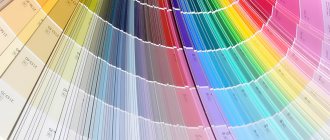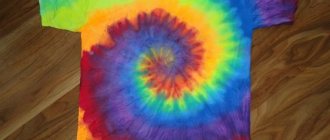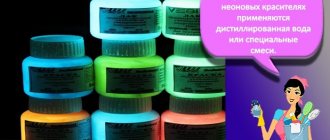In modern interiors, surface painting is becoming increasingly popular. This solution is considered practical, especially if the owners are accustomed to frequent changes in the interior - a painted wall can be easily repainted in a different shade even without special preparation. Also, this option often becomes a more affordable type of finishing than the also common wallpapering. Of course, savings can only be achieved if the walls and ceiling in the room are perfectly smooth. Otherwise, you will also have to spend money on leveling them.
Another nuance is that the desired shade may not be available for sale among the ready-made formulations. But this is not a reason to abandon the chosen idea. It is enough just to find a suitable option in the palette of possible ones and mix the color and base in the required proportions. We'll tell you what paint to choose as a base, how much dye you need to add, and how to properly tint the composition.
How to dilute the color for painting wallpaper?
This is done like this: mix 100 ml of paint in a small container, then add a few drops of pigment. You can add it with a syringe; this method will allow you to determine the number of drops and see when the mixture acquires the desired color.
Interesting materials:
How to remove subtitles on YouTube? How to remove the white background in paint? How to remove the background in paint? How to remove the background in paint? How to remove the white background in paint? How to remove the background in paint? How to remove the slide title in power point? How to remove a slide subtitle in a presentation? How to remove a slide title in a presentation? How to remove comments live?
Types of tinting
There are several ways to tint paint at home. They differ slightly from each other in the technology used, but the quality result is almost the same.
Classic tinting
This method involves a classic white color as a base, to which a certain color is then added.
- The color is a concentrate of a certain shade; in the process of mixing with a white base, the desired shade is formed.
- The disadvantage is that it is quite difficult to make the desired color, especially if there is no experience in such procedures.
Adjustment of the amount of color is carried out independently, because of this there is a risk of adding too much concentrate.
This method is convenient because tinting can be done in virtually any convenient container, even in a factory can of white paint, creating the desired shade in it.
Glaze
A distinctive feature of this method is that more than 2 shades are used here. First, the colors can be mixed with each other to obtain a rich color of the desired shade. And only after that it is added to the white base to obtain the desired color.
The complexity of this method is higher than the previous one, but it allows you to get a more accurate color, since 2 or more colors are used in the creation process.
Facade painting
Thanks to the availability of a variety of shades and the ability to make them yourself, home owners are trying to add more variety when decorating the exterior of a building. In most cases, façade paint is tinted using a computer method, due to the large working area. You can get the desired tone quite quickly by selecting it using a special table.
Painted facades have a beautiful and aesthetic appearance, and the use of color makes water-based paints brighter. In addition, such painting protects the facade from negative environmental factors.
Coloring compounds
To create the correct tone and even coloring of the surface, it is recommended to use tinting paint. It is created by mixing a base tone, usually white, with a coloring compound - color.
It is based on six basic colors: white, red, yellow, black, green and blue. All of them are used in both interior and exterior decoration. For interior painting, light colors such as yellow, beige, and blue are mainly used.
Wall color pigment can be of organic or inorganic origin. The tone of the organic type is brighter and more saturated. Over time, paints and varnishes based on it lose their brightness and saturation due to exposure to ultraviolet radiation. In this regard, it is not recommended to use it for facade paint. Inorganic pigments are much more resistant to negative environmental influences, but are characterized by a rather narrow range of shades.
There are several types of compositions of tinted substances:
- Paint - the composition must be identical to the paint and varnish material used.
- Paste is a convenient use that allows you to adjust the shade while mixing.
- Dry composition is the most affordable option, but has a too limited range of colors.
If we talk about the scope of application, paint colors can be universal (that is, suitable for any paint and varnish compositions) and highly specialized.
Recommendations
We considered a large number of varieties of colors. Each of them is optimal only in a certain case, this should be taken into account when choosing the appropriate variety.
When wondering how to tint paint, it is necessary to take into account the characteristics of the colors used. For example, if a liquid color is used, then you need to mix it with a white base. Mixing can take place in virtually any convenient container; it is necessary to thoroughly mix the paints after adding the required amount of color.
If powder color is used, it can only be mixed with water-based paints. This is due to the fact that in other types the powder simply cannot dissolve, as a result of which it will not be possible to create the desired shade of color.
With pasty ones, everything is much simpler; they can be mixed with virtually any colors, and then additionally mixed with a white base. Mixing should take place using a whisk, because the color has a dense texture that must be thoroughly mixed with other components of the mixture.
Where is it used?
The need to tint the paint arises in the following cases:
- selection of shades according to the design of the room;
- damage to small areas of the painted surface that need to be corrected;
- interior design using several shades of the same color;
- if you don't have enough paint and the store doesn't have the right tone.
Thanks to tinting, you can make cosmetic repairs in a short time, abandoning complex and voluminous painting work.
The selection of colors also depends on the type of lighting, which determines the future tone. Artificial lighting gives cool colors a darker shade, while warm colors, on the contrary, become lighter.
What to consider?
Painting walls with color is carried out using special equipment that can be purchased at hardware stores. Tinting acrylic paint must be carried out in compliance with certain rules:
- Coloring is done directly in the room that will be painted. This is necessary to evaluate the resulting tone in daylight and artificial light.
- Colors for water-based paint should be added in small portions or drops so that the dye does not spoil the main tone.
- It is important to take into account the fact that paint on a large area looks a little different than on a small section of the wall.
It is quite difficult to obtain a black color, since even one drop can completely change the color, and it will be much more difficult to lighten it. Quite often the result is a dull gray. Therefore, it is better to stock up on small jars and do everything gradually, using drops.
You also need to remember that on a wall using water-based paints, the resulting color will look brighter than in a container, so notes of gray on the surface may look completely different.
To get a good color, choose a white paint of the appropriate base without any yellowish admixture. The color for acrylic paint will give the desired shade only with a snow-white base. If the walls are to be painted, the colors should be chosen specifically for the walls, and not for the ceiling, which is quite important. Such compositions for acrylic paints have some differences in the level of wear resistance, soilability and elasticity.
If you need to re-tint water-based paint, it is important to buy compounds from the same manufacturer, since one tone can differ significantly from different brands.
When choosing latex paint, you need to know that it has a rather thick consistency, so it requires careful and long mixing. The solvent in this case is water, which is gradually poured in until the desired consistency is formed. After this, the desired dyes can be added to the resulting composition.
Acrylic thinners
You can also dilute acrylic paint using special thinners. They consist of special organic solutions that can affect the structure of the substance. Depending on the degree of drying, these products are divided into several types:
- Fast. They are used in cases where the paint is used at relatively low temperatures. If you dissolve the mixture with these substances, the liquid dries quickly and adheres well to the material it covers.
- Average. Optimal drying speed. It is advisable to dilute paint with these mixtures in cases where painting is done indoors and at moderate temperatures.
- Low. Such solutions take quite a long time to dry. Therefore, it is recommended to use them only in conditions with elevated temperatures. Such mixtures reduce the risk of rapid evaporation of water, as well as the risk of cracks. For the paint to dry, it takes time to allow a strong bond to form on the surface of the film.
Making a solution from paint and solvent is quite simple. The main thing here is to add the required amount of thinner and mix thoroughly. When mixing, you need to clarify the proportion, which should be indicated by the manufacturer on the packaging.
Please note that in a similar way you can also use a color scheme that can change the color palette of the paint. It is advisable to do this very carefully, since it is unlikely that it will be possible to restore the original color.
Table and color catalog
For paint tinting, we use the most popular color catalogs used by designers and builders - RAL, Caparol, NCS, Dulux, Tikkurila, Moscow Palitra. In addition, our specialists can select a color based on a sample, for example, if the client wants to paint the walls in exactly the same color. To order paint tinting, follow these steps:
- Choose a suitable shade from any catalog or prepare a sample.
- Tell us the color number, paint, quantity and packaging, or area to be painted.
- Pick up your finished order or order delivery.











